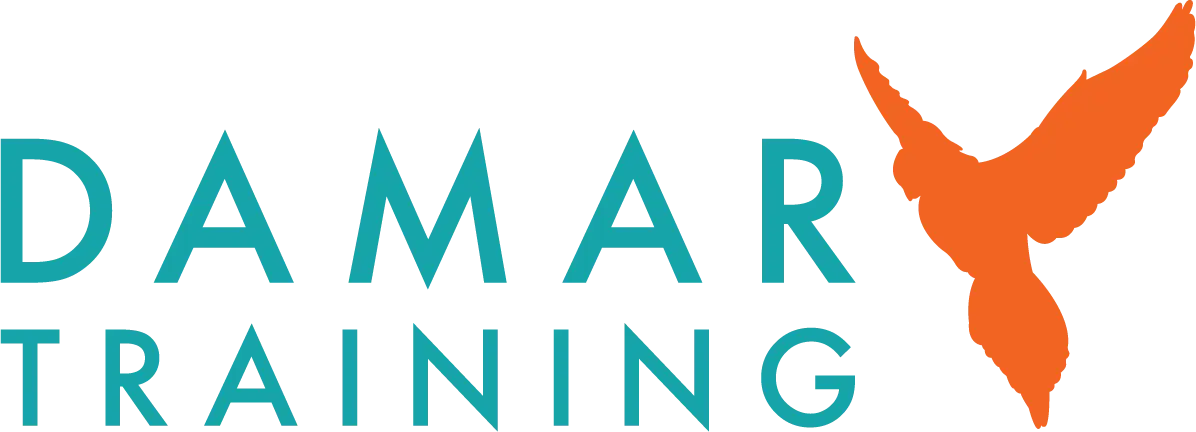As an employer, you might want to develop your workforce by taking on an apprentice or using apprenticeship training to upskill your existing staff. But with so many levels of apprenticeships on offer, choosing the right one can be challenging.
In this blog by our experts at Damar Training, we’ll explain what each apprenticeship level entails and how to select the most appropriate option for your business needs.
What are the different levels of apprenticeships?
To help you navigate the world of apprenticeships, the government has established a clear system of levels which align with familiar educational qualifications. These levels help to define the complexity of the role, the depth of knowledge required, and the level of responsibility the apprentice will undertake.
Here’s a quick glance at the different levels of apprenticeships:
- Foundation and intermediate apprenticeships (level 2)
- Advanced apprenticeships (level 3)
- Higher apprenticeships (levels 4 and 5)
- Degree apprenticeships (levels 6 and 7).
Below, we’ll delve into each level in a bit more detail so that you can get a better idea of what they offer and what qualifications they relate to.
Level 2: Foundation and intermediate apprenticeships
Foundation apprenticeships
Foundation apprenticeships represent the government’s newest initiative, offering basic entry routes for young people into employment. These eight-month programmes launched in August 2025, initially covering construction, care, digital and engineering.
Intermediate apprenticeships
Academic equivalent: Five GCSE passes (grades 4-9)
Who they’re for: Industry newcomers with little to no relevant experience as they provide essential foundational skills and knowledge for entry-level roles.
Examples include:
- Customer service practitioner
- Accounts or finance assistant
- Food and beverage team worker
- Early years practitioner
Level 3: Advanced apprenticeships
Academic equivalent: Two A-level passes
Who they’re for: Those who have completed level 2 apprenticeships or possess equivalent experience. These apprentices can develop specialised skills within specific occupational areas and take on more challenging work.
Examples include:
Levels 4 and 5: Higher apprenticeships
Academic equivalent: First year of university (level 4) or foundation degree (level 5)
Who they’re for: Professionals seeking specialised skills and career advancement within their field. Higher apprenticeships combine high-level academic study with practical work experience, and apprentices can develop specialised technical skills that enable career progression to advanced professional levels. Some programmes include additional qualifications such as higher national diplomas.
Assessment methods become more sophisticated at this level, incorporating research projects and comprehensive practical evaluations that demonstrate real-world application of learning.
Examples include:
- Data protection and information governance practitioner
- Professional accounting technician
- Operations manager
Levels 6 and 7: Degree-level apprenticeships
Academic equivalent: Bachelor’s degree (level 6) or master’s degree (level 7)
Who they’re for: The highest apprenticeship levels enable established professionals to advance into senior leadership or highly specialised technical roles. Some apprentices obtain formal degrees as part of their programme.
At these levels, workplace responsibilities include leading complex projects, driving innovation, solving intricate problems, and contributing to strategic organisational decision-making.
Examples include:
- Solicitor
- Social researcher
- Youth worker
*Important note: From January 1, 2026, individuals aged 22 and over will no longer receive funding for Level 7 apprenticeships. For more information on funding and grants for apprenticeships, have a read of our blog: Do employers get paid for having an apprentice?
Choosing the right level of apprenticeship
Selecting the appropriate apprenticeship level requires carefully evaluating your organisational objectives, role requirements and the individual’s background.
Are you looking to:
- Bring in fresh talent without limited experience skills? Levels 2 and 3 are excellent options for new entrants and can nurture employees from the ground up.
- Upskill existing staff members? Higher apprenticeships at levels 4 and 5 are ideal for progressing current employees with experience into more senior positions.
- Cultivate leadership and strategic expertise? Levels 6 and 7 are designed to develop senior professionals and future leaders, helping to address your organisation’s strategic needs.
If you’re looking at apprenticeships for yourself, our advice would be to not worry too much about the level. What’s more important is the skills, knowledge and experience you’re going to gain in the role.
Sabina Adam, Recruitment Co-ordinator here at Damar Training, said:
“When I’m talking to individuals, they can get overly caught up in the number associated with the apprenticeship level. They think that because they already have level 3 qualifications, that means they should be able to start at level 4 for their apprenticeship, but academic qualifications and apprenticeships are different. Having A-Levels doesn’t mean that you necessarily have the capability or the opportunity to perform within a level 4 role.”
Let Damar guide you through your apprenticeship journey
Hopefully, this blog has taught you more about the different levels of apprenticeships. At Damar, we conduct a thorough initial assessment to gain a full picture of the role requirements, organisational objectives and apprentice’s starting point. And it’s our extensive history of apprenticeships that makes us so passionate about the benefits of an apprentice for your organisation.
If you’re considering apprenticeships for your team, but are unsure which apprenticeship and what level is most appropriate, please get in touch for further advice and guidance.
Frequently asked questions:
How do I choose the right apprenticeship level for my organisation’s needs?
Choosing the right apprenticeship level for your organisation’s needs is a decision that will significantly impact your workforce development, productivity, and talent pipeline. We would recommend defining your job role and business needs, considering future progression, and addressing the current skillset of your team.
What entry requirements are needed for different levels of apprenticeships?
Entry requirements vary by level, training provider and employer. Typically, level 2 apprenticeships don’t require any formal academic requirements, but a keen interest and readiness to learn are essential. Level 3 to 5 apprenticeships may require GCSEs, other recognised qualifications, as well as workplace experience. Levels 6 and 7 are the most advanced apprenticeships, where more significant qualifications and experience are typically required.
How do the different levels of apprenticeships affect funding?
Whilst the costs of the apprenticeship training vary by level and apprenticeship standard, the funding schemes are consistent. Levy-paying employers use funds from their levy pots, while for SMEs and non-levy paying employers, apprenticeships are fully funded by the government for apprentices up to the age of 21 and 95% funded for those aged 22 and over.
The only difference is for level 7: From 1 January 2026, levy pots and government funding is only available for apprentices up to the age of 21. There is no funding for apprentices aged 22 and over.

